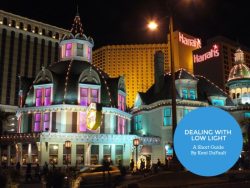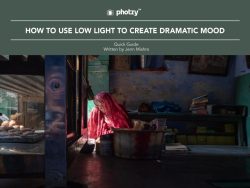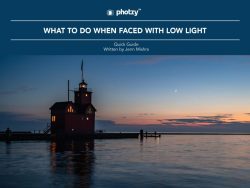Essential Guides and Tips for Mastering Low Light Conditions
Navigating the challenges of low light in photography can transform a good photographer into a great one.
Low light conditions present unique opportunities to capture mood, detail, and emotion in ways bright settings cannot. Today, we delve into practical strategies and tips across four detailed guides that empower photographers to master dim environments. Whether you’re dealing with natural twilight or poorly lit interiors, these insights will help you enhance your photos without sacrificing quality.
1) Dealing with Low Light
This guide focuses on practical advice for photographers facing low light conditions, focusing on three main strategies: raising ISO, adding additional light, and increasing exposure. Raising ISO allows more flexibility and movement without extra gear but can reduce image quality due to noise. Adding light, whether through flashes or other sources, helps maintain low ISO and control over the scene’s illumination but requires carrying additional equipment. Increasing exposure by opening the aperture or extending shutter speed is another solution, although it can lead to issues with depth of field and camera shake. The guide stresses the importance of understanding these methods’ effects to choose the best approach for any given low-light scenario. Ideal for photographers who want to enhance their skills in challenging lighting conditions without compromising image quality. Read more →
2) Five Tips for Low Light Photography
Want to conquer challenging lighting conditions without shying away? Jo Plumridge offers straightforward advice to effectively handle low light scenarios, emphasizing the importance of manual control over camera settings and shooting in RAW to maximize detail retrieval in post-processing. Key techniques include stabilizing your camera to prevent blur during long exposures, using wider apertures to allow more light, and increasing ISO sensibly to enhance light sensitivity without compromising too much on image quality. Additionally, the guide suggests positioning subjects closer to light sources and exploring the use of external lights to illuminate scenes better. Whether you’re capturing the night sky or dimly lit street scenes, these tips are meant to empower photographers to turn tricky lighting into compelling photographs. Read more →
3) How to Use Low Light to Create Dramatic Mood
Dive into the nuances of low light photography and how it can be used to enhance the emotional impact of images. Low light isn’t just about dimness but about using shadows and minimal light sources to craft moods and atmospheres that evoke deeper feelings. Jenn suggests embracing the darkness instead of always trying to brighten it, highlighting how even a single light source can transform a scene into something dramatic and intense. The eBook also covers practical tips on camera settings, such as lowering exposure or using spot metering to emphasize light contrasts, which enhance the mood even further. There are also post-processing tips that can help photographers manipulate light and shadow to further define the mood of their photographs. This is an invaluable guide for anyone looking to explore the more emotive and narrative potential of photography through the creative use of light and shadow. Read more →
4) What to Do When Faced with Low Light
Get practical advice for grappling with low-light conditions. It explains that low light doesn’t mean no light, and with the right techniques, you can still capture stunning photos. Key tips include opening up the aperture to allow more light in, raising the ISO to make your camera sensor more light-sensitive, and extending shutter speeds to capture more light over time. The guide also suggests using external light sources or embracing the natural low light for dramatic effects. A great read for anyone looking to improve their low-light photography skills, and a solid reminder that you don’t need to pack up your camera just because the sun has set. Read more →
Conclusion
The art of low light photography is about understanding and manipulating light to serve your creative vision. From adjusting your camera settings like ISO and aperture to exploring additional lighting equipment, each strategy you employ brings you closer to capturing the essence of your subject in challenging conditions. Remember, low light doesn’t mean limited possibilities—it opens a new realm of dramatic, emotive photography waiting to be explored. Armed with the knowledge from these guides, we hope you become better equipped to turn low light scenarios into stunning visual narratives. Embrace these challenges as opportunities to showcase your adaptability and creativity as a photographer!
Additional Reading
When you understand light, you’ll be able to utilize it, and skyrocket your images to their very best. Understanding light means you’ll know how to “accurately” manipulate the light to your advantage. If you want to have more power to control the mood and feeling in your shots, check out this premium guide, Understanding Light Book One from our friends at Photzy. Get it here.




